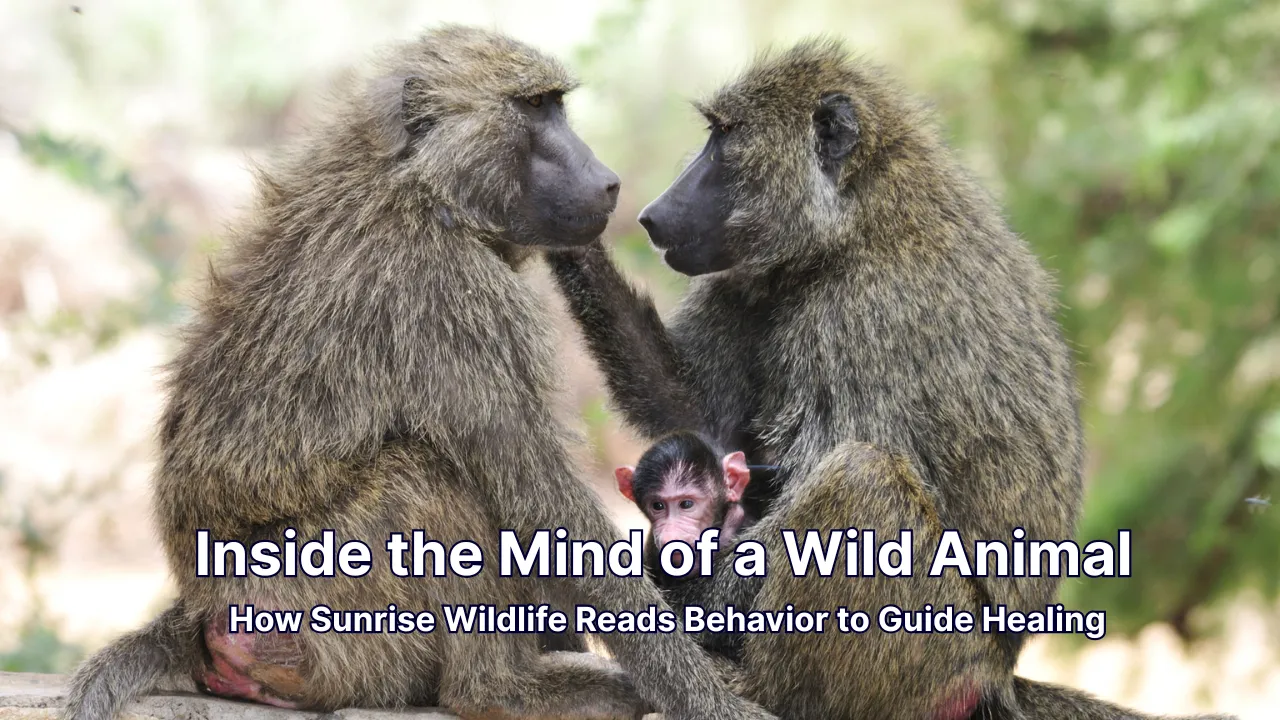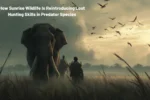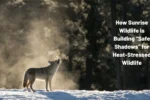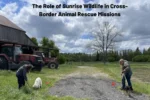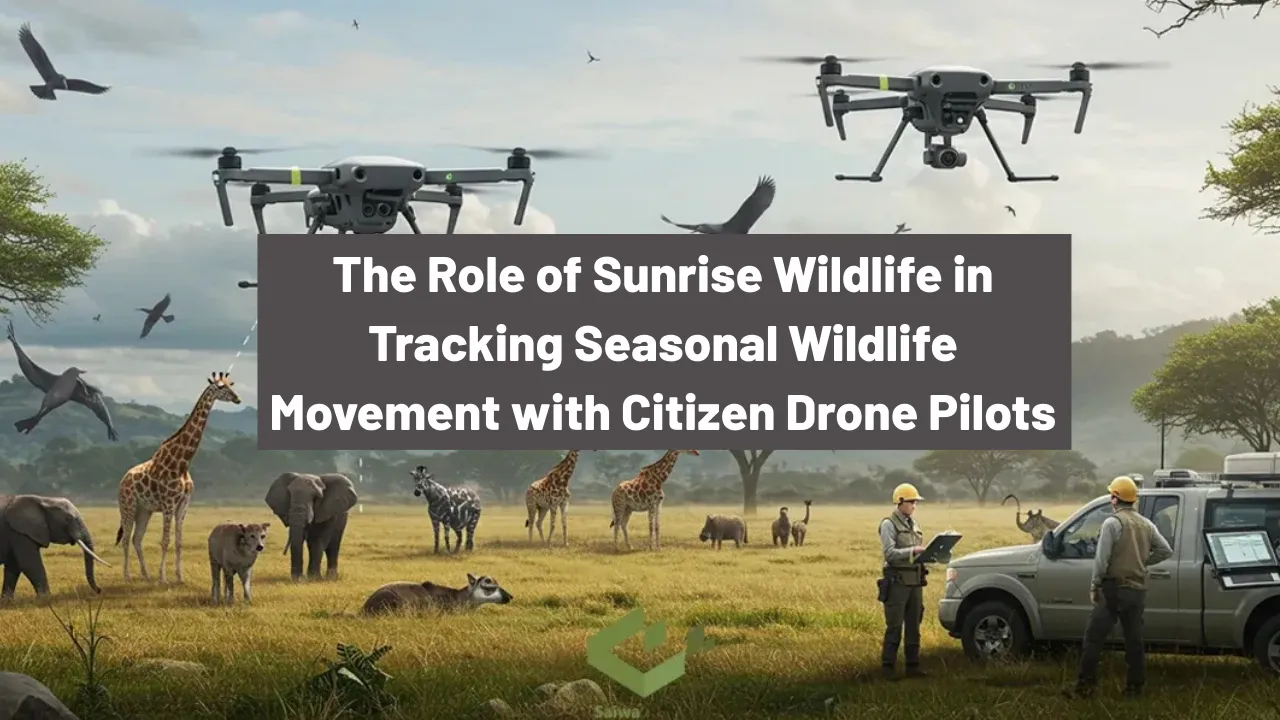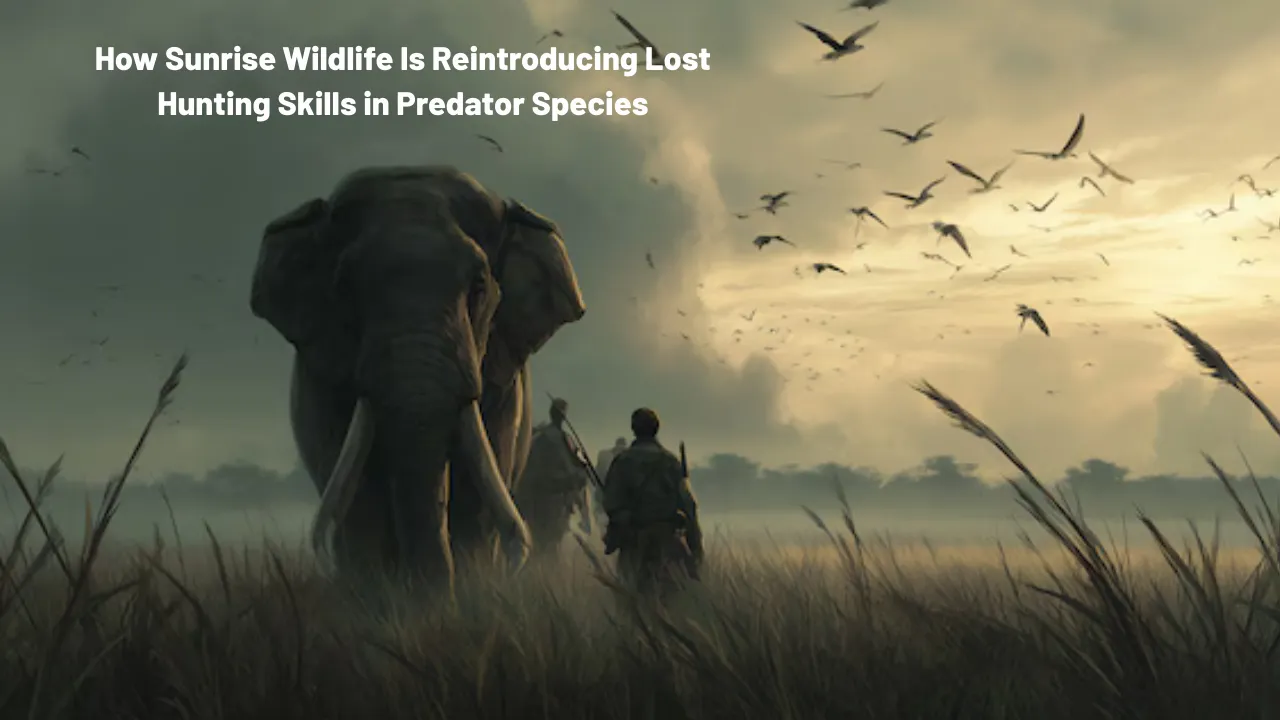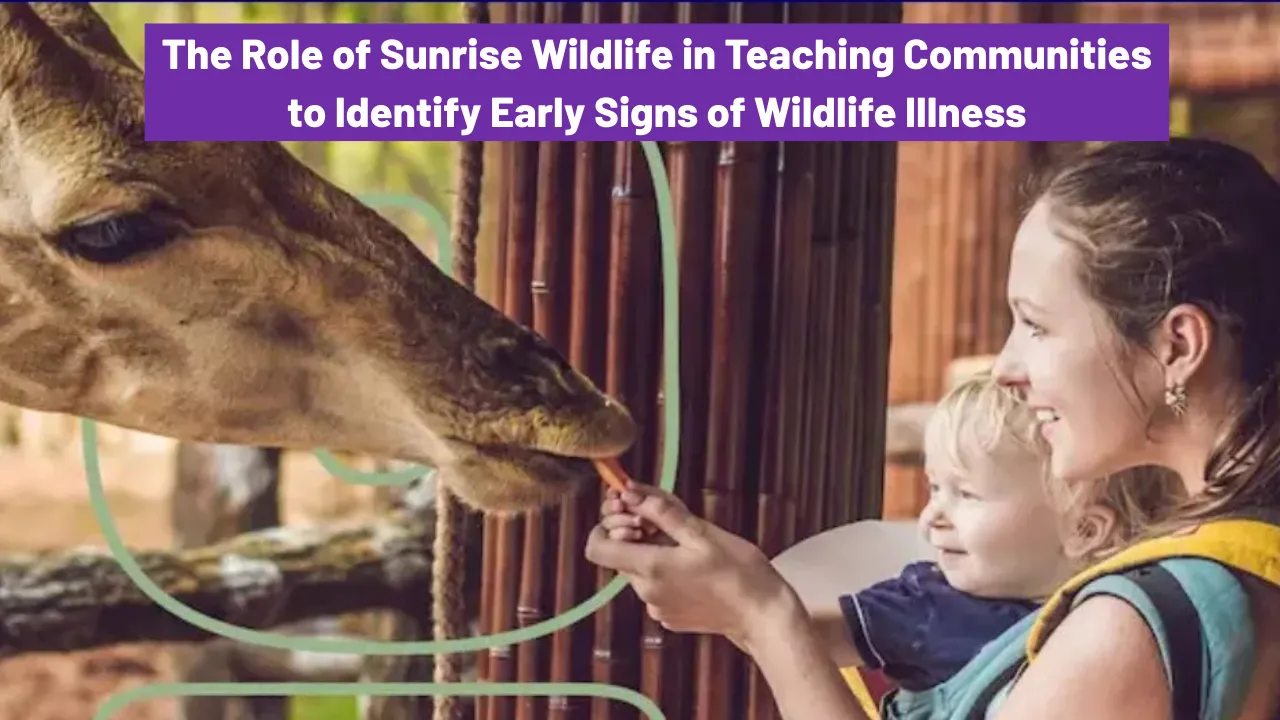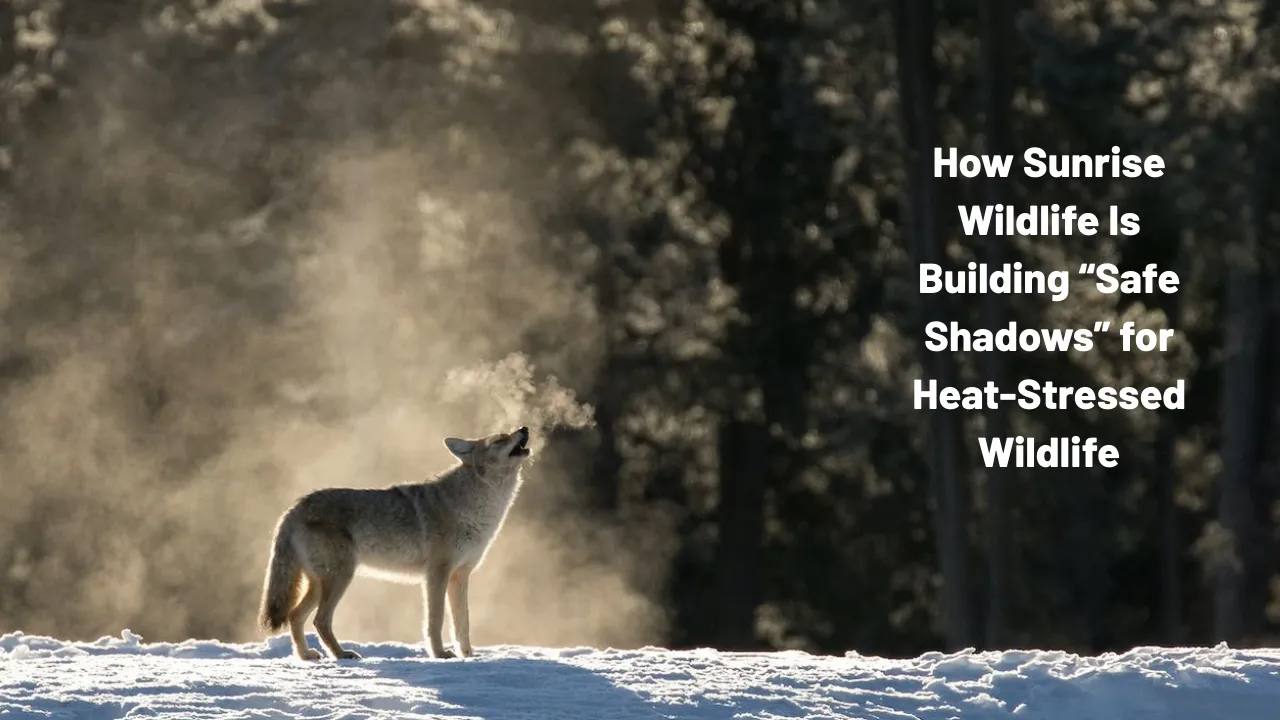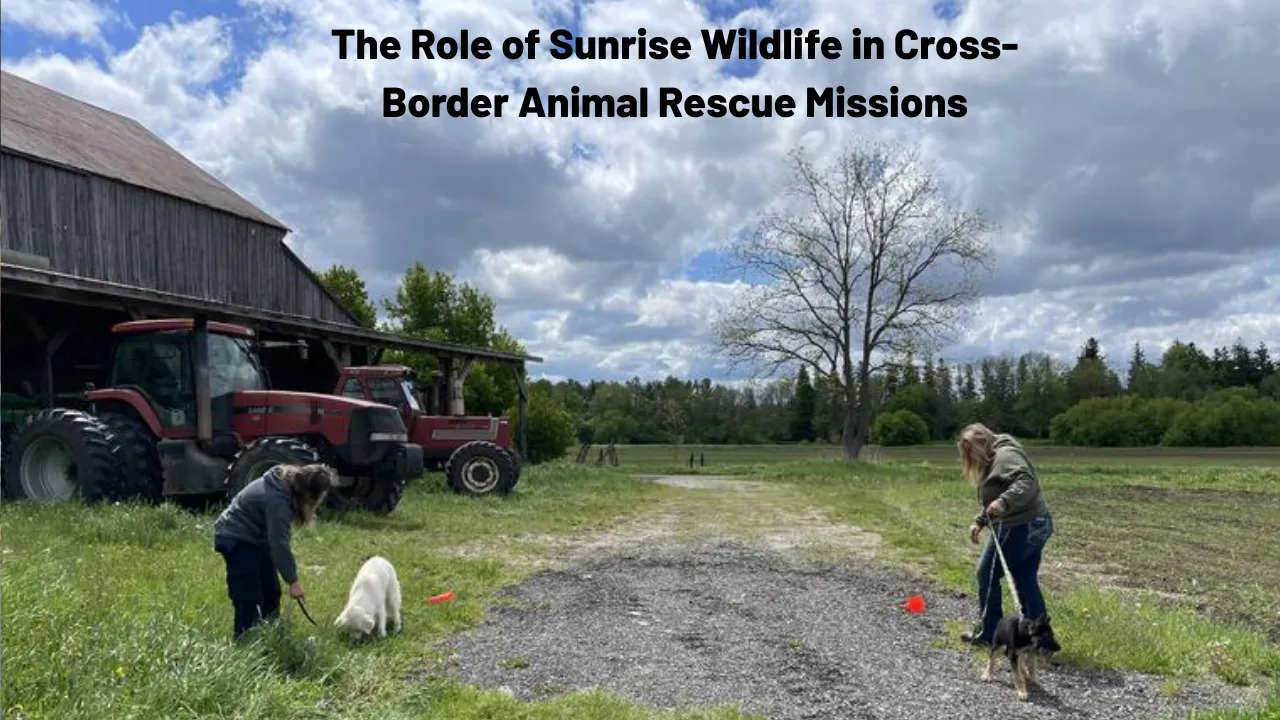Inside the Mind of a Wild Animal: Wild animal behavior often feels mysterious to the average person, but to those who work closely with wildlife, every twitch, growl, or change in posture holds meaning. At wildlife rescue centers, understanding these subtle signs is the foundation of compassionate, effective care. It’s not just about treating injuries—it’s about reading an animal’s mind through its movements.
In this article, we’ll explore how Sunrise Wildlife expertly interprets the mental and emotional states of wild animals through behavior. You’ll gain insights into how behavior-based observations guide rehabilitation, influence medical decisions, and even determine when an animal is ready to return to the wild. Each section sheds light on how knowledge of behavior becomes the most powerful healing tool in the hands of experienced wildlife caregivers.
Understanding Wild Animal Behavior in Wildlife Healing
The science of wild animal behavior is not just about watching animals—it’s about interpreting what they’re trying to communicate. At Sunrise Wildlife, this understanding plays a critical role in wildlife rehabilitation. By noticing how an animal reacts to its surroundings, food, touch, or sound, caregivers get insight into the animal’s physical health and emotional state. These signals are often subtle but can inform major treatment decisions. Behavioral interpretation helps minimize stress, increase safety, and support recovery by ensuring that every animal receives care in line with its instinctual needs and comfort levels.
Why Understanding Wild Animal Behavior Matters
Behavior is the first and sometimes only clue a caregiver has when assessing an injured or sick wild animal. Most wild creatures will mask pain or distress, a survival instinct developed to avoid attracting predators. This makes traditional diagnosis more difficult. At Sunrise Wildlife, caregivers are trained to pick up on even the slightest changes—how an animal walks, eats, or hides can all offer valuable information.
Behavioral knowledge helps tailor a more accurate and empathetic care plan. It tells the team when to engage with the animal and when to step back. Observing wild animal behavior can reveal everything from internal pain to emotional trauma, allowing staff to treat the root cause, not just the symptoms.
How Sunrise Wildlife Interprets Animal Signals
Wildlife caregivers at Sunrise Wildlife start with one simple principle: watch before acting. Every animal brought in is first given time to settle while trained staff quietly observe from a distance. Their behavior during this time is carefully noted—movement, posture, vocalization, eye contact, and reactions to their environment all form a baseline for care.
For instance, a raccoon circling repeatedly may be showing signs of neurological damage. A bird flinching at slight movements might be experiencing chronic pain or fear. Even food preference or eating patterns can offer deep insight into internal discomfort or emotional unease. This practice of reading animal behavior cues reduces stress, avoids unnecessary intervention, and promotes faster recovery.
The Role of Body Language in Healing
Nonverbal communication is central to life in the wild. Animals depend on it for survival—whether to express dominance, fear, or comfort. Understanding this silent language is a core part of the care process at Sunrise Wildlife.
Posture, tail movement, fur condition, and facial expressions all contribute to what an animal is trying to say. A relaxed posture with open movement often signals healing and adaptation. Conversely, a stiff body, pinned ears, or refusal to make eye contact may signal pain or high stress levels. Staff also track breathing rates and micro-movements to detect physical or emotional discomfort that might go unnoticed during a quick exam.
Common Behavioral Signs and What They Mean
Each species communicates differently, but there are certain universal signals that experienced rehabilitators know how to read. Here are a few common behaviors and their implications:
- Hiding or burrowing frequently: Fear or chronic stress.
- Pacing or circling in enclosures: Frustration, neurological issues, or confusion.
- Aggressive displays or biting: Pain, fear, or unfamiliar surroundings.
- Excessive grooming or fur plucking: Skin irritation or anxiety.
- Sudden silence or vocal outbursts: A response to discomfort or fear triggers.
These observations help in customizing habitat conditions, reducing interaction, or even identifying when further medical tests are needed.
Two Key Ways Behavior Guides Healing
1. Observing Feeding Patterns
One of the first things monitored during wild animal behavior assessments is how and when animals eat. A sudden change in appetite or approach to food can indicate serious underlying problems. Wildlife caregivers observe whether animals are eating consistently, favoring one side of the mouth, or rejecting specific textures. These behavioral patterns help adjust feeding techniques and identify potential dental issues, gastrointestinal distress, or emotional trauma.
2. Watching Sleep and Rest Cycles
Sleep is crucial to healing, and disruptions in rest often reveal problems not visible in daylight. An animal that sleeps with one eye open, stays constantly alert, or shifts positions restlessly may be experiencing stress or discomfort. Sunrise Wildlife staff adjust light levels, noise exposure, and cage placement based on rest behavior. By creating a more peaceful environment based on observed needs, they accelerate the recovery process significantly.
Building Trust Through Behavioral Cues
Trust is not about making animals tame—it’s about making them feel safe enough to heal. Staff members at Sunrise Wildlife build this trust through consistent behavior on their end: soft voices, predictable movements, and patience. Over time, animals begin to show signs of trust such as reduced flight responses, willingness to eat near humans, or relaxed grooming in their presence.
Behavior-based trust-building allows for easier treatment without forcing physical restraint. Animals that trust their caregivers heal faster because they are not under constant emotional stress, which can slow immune response and overall recovery.
Preparing for Release Back into the Wild
Perhaps the most critical stage in wildlife rehabilitation is the decision to release. It’s not just about physical health—it’s about behavioral readiness. Caregivers look for natural foraging behavior, territorial responses, alertness, and avoidance of humans. If a hawk hesitates to fly or a deer shows no flight reaction to movement, it may not yet be ready for life in the wild.
Behavioral assessments ensure animals are not only healthy but also capable of surviving and thriving on their own. Releasing an animal too soon or too late can compromise its safety. That’s why reading animal behavior is essential from rescue to release.
FAQs
1. Why do wild animals act differently in captivity?
Captivity can alter behavior due to stress, unfamiliar surroundings, and lack of control. Animals often show behaviors they wouldn’t in the wild, like pacing or hiding more frequently.
2. How do caregivers know if an animal is in pain?
Pain is usually shown through posture, decreased movement, aggression, or changes in appetite. Caregivers rely on small behavior cues instead of obvious signs.
3. Can behavior change after an animal starts healing?
Yes, many animals become calmer, more active, or more curious once they begin to heal. Behavior often mirrors the physical and emotional recovery process.
4. Why is human interaction limited during rehabilitation?
Excessive human interaction can lead to dependency or stress. Limiting it helps preserve natural behavior, which is essential for a successful release.
5. Is behavior monitoring better than medical tests?
Both are important, but behavior offers real-time, non-invasive insights that can prevent issues before they become serious.
Final Thought
At Sunrise Wildlife, the path to recovery begins with observation. Wild animal behavior is the most honest language animals speak—and those who learn to listen can offer the best care. From subtle body movements to sleeping patterns, behavior reveals both the pain animals carry and the trust they’re willing to build. In the end, it’s not only about mending wounds; it’s about healing the spirit too.
If this look into wildlife rehabilitation inspired you, share the article or explore more content about your favorite wild species. And for something fun, why not check your animal zodiac to see what your inner wild side might be?
